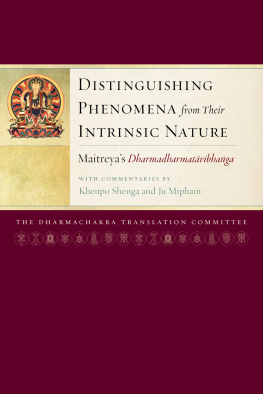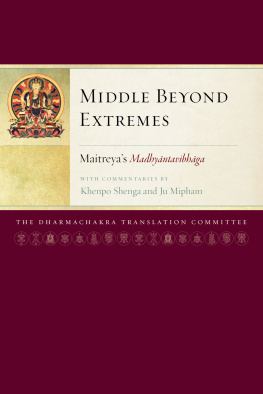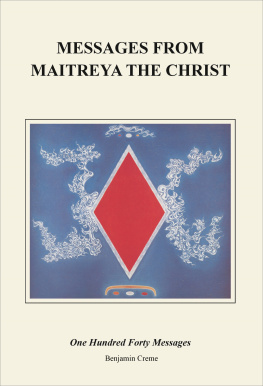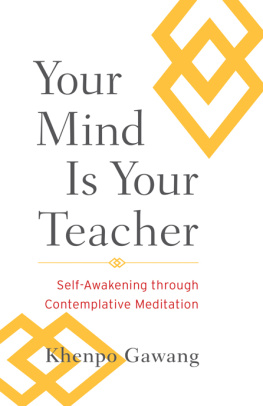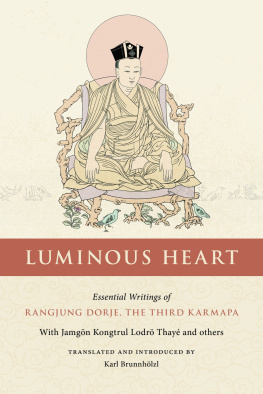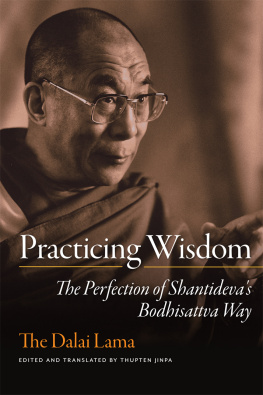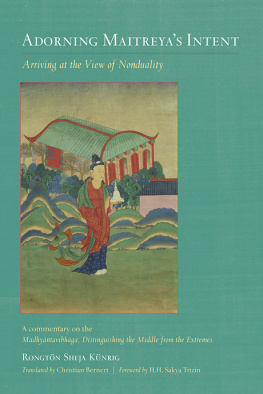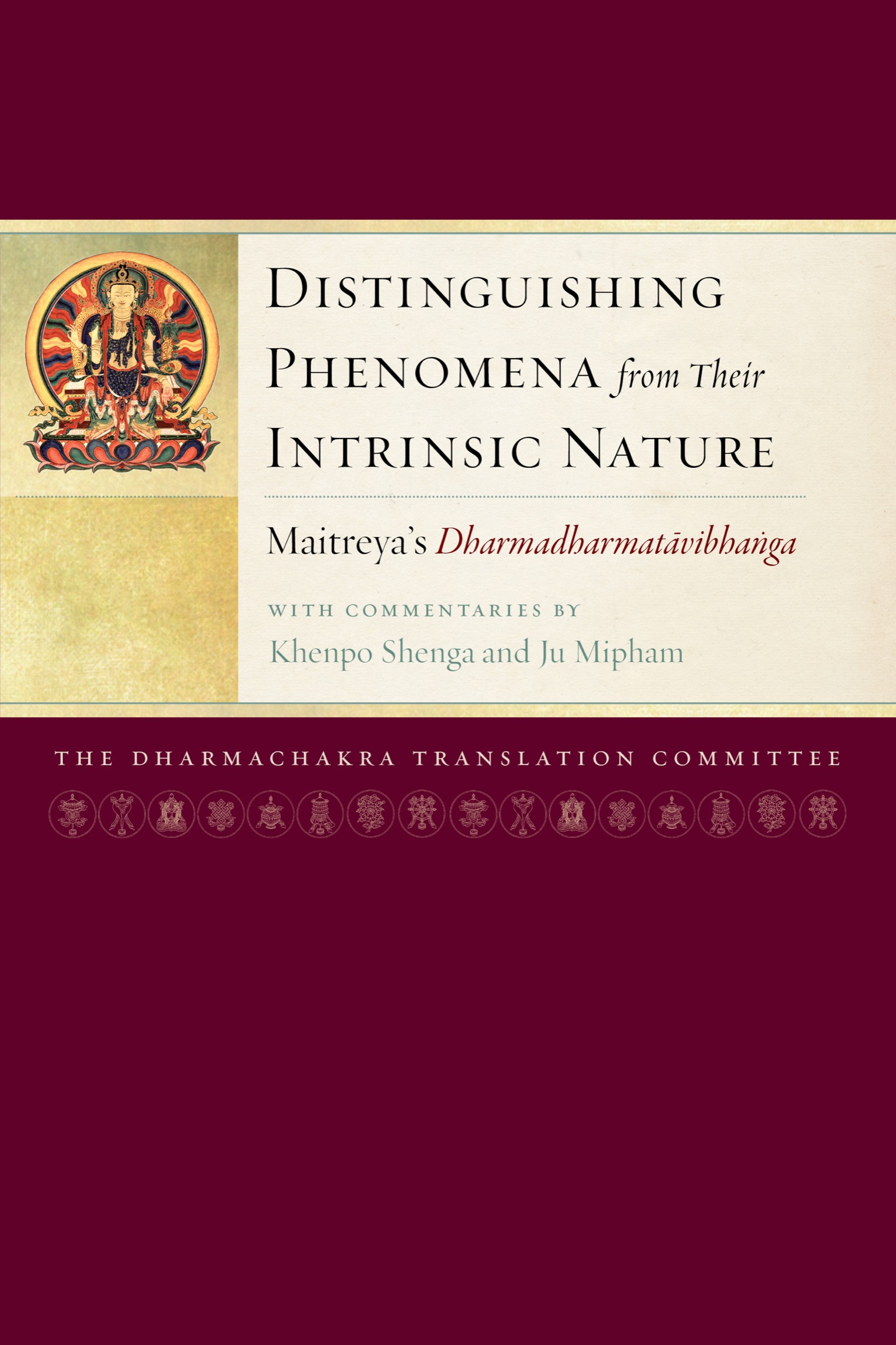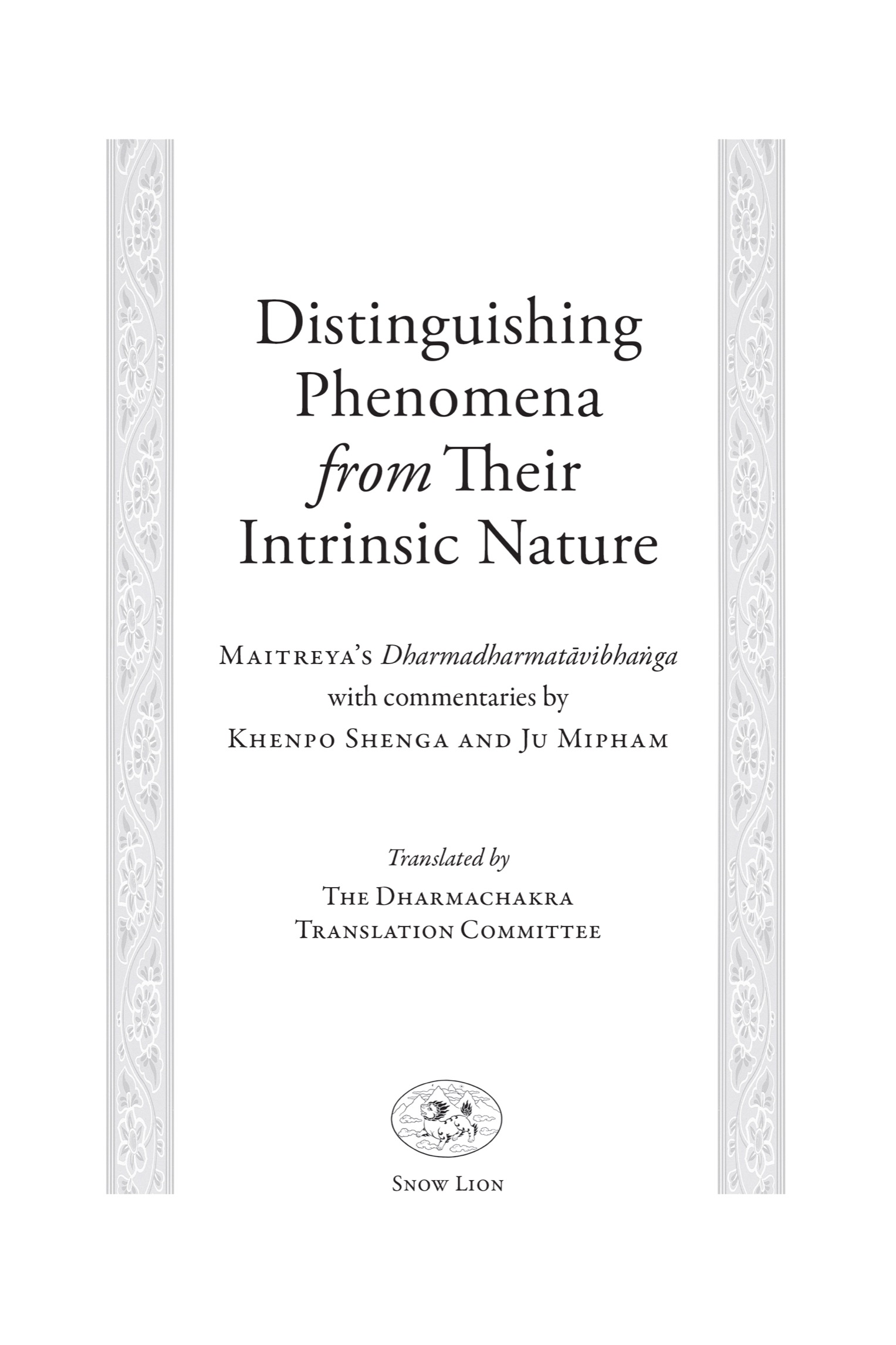Phenomena from their intrinsic nature.
What a joy that this wish-fulfilling jewel is here today and remains for the future!
The entire treasury of profound and vast Dharma.
Is excellent fortune for sentient beings.
Offered by Chkyi Nyima, who bears the name of Tulku, on the eighth day of the first month in the Year of the Water Dragon (March 1, 2012).
INTRODUCTION
Along with the works of Ngrjuna and other masters of the Middle Way School, the teachings of Maitreya occupy a unique position in Tibetan Buddhism. In all four of Tibets primary Buddhist lineages, the writings attributed to Maitreya, known popularly as Maitreyas Five Teachings, are considered essential reading and are held up as masterpieces of Buddhist literature. Indeed, it is difficult to find a monastic college in Tibet where the teachings ascribed to Maitreya are not studied.
One testament to the influence of these texts is the fact that many masters from disparate schools of Buddhist thought and practice have claimed these texts as representative of their own particular views. Countless commentaries have been written on these five texts over the centuries, each presenting a unique perspective and positioning Maitreyas revelatory teachings within a broader context of Buddhist philosophy. In this volume, a companion to the previously published Middle Beyond Extremes, we have included one of Maitreyas most illuminating works, Distinguishing Phenomena from Their Intrinsic Nature, two highly regarded masters associated with the nonsectarian Rim movement in Tibet. Before we turn our attention to this text and its commentaries, let us consider the origins of Maitreyas teachings and the role of Asaga, Maitreyas scribe and primary commentator.
Asaga and the Teachings of Maitreya
The Indian saint Asaga was a prolific author and one of the most influential figures in Buddhist history. Along with Ngrjuna, progenitor of the Middle Way School, he is known as one of the two pioneers of Buddhist philosophy, having founded a system of Buddhist thought and practice known as Yogcra, the Yogic Practice School. In Tibet the philosophical lineages initiated by these two masters are considered the two primary forms of Great Vehicle philosophy. Their literary works continue to be at the center of the scholastic tradition of the Nyingma, Sakya, Kagyu, and Geluk schools.
According to legend, Asaga was born in Northwestern India (present-day Pakistan) and originally practiced as a monk in one of the lineages associated with the so-called Lesser Vehicle. After converting to the Great Vehicle, he became inspired to spend a period of time in strict retreat and decided to focus on a form of devotional practice directed toward the future buddha Maitreya, who is believed to reside in Tuita Heaven awaiting the time that he will return to the world as the next fully enlightened teacher of this age. Asaga spent years meditating in the wilds of India. Throughout this period he was plagued by a lack of confidence and a seeming inability to progress along the path of meditation. Despite his own perception, however, Asaga had indeed purified his mind and was on the verge of a life-altering visionary encounter.
After twelve long years without a single vision of Maitreya, Asaga had lost all hope of encountering the future buddha and receiving the teachings he sought. Broken-hearted and drowning in despair, he left his retreat and wandered back to civilization, convinced that his years of practice had brought him no benefit at all. As he wandered along the road, Asaga came across a howling, disease-ridden dog that was covered with maggot-infested wounds. Asaga was overcome with compassion. His first impulse was to pick out the maggots, but he noticed that they themselves were so delicate that by picking them off the dog he would risk hurting them. Moreover, even if he were to get them off the dog unhurt, they would be deprived of their sustenance and would surely perish.
After searching for a way to help the dog without endangering the maggots, the only solution he could find was to cut off a piece of his own flesh for the maggots to feed on and to lick them off with his tongue to ensure that they would not be injured. Despite his overwhelming compassion, he found the idea of licking the maggot-infested wounds of a diseased dog revolting, so he closed his eyes and with great determination inched toward the dying dog with his tongue out. To his surprise, however, his tongue never reached the dog. When he opened his eyes he was shocked to find the future buddha Maitreya standing before him.
For years Asaga had yearned for such a moment, yet his first reaction to Maitreyas presence was one of indignation. Where is your compassion? he inquired. I have meditated for twelve long years without so much as a single vision of you to show for it!
I have been with you all along, Maitreya responded, but until this moment your mind was clouded by obscurations. The intense compassion you just experienced for the dog was enough to dissolve these obscurations, which is why you see me now. If you dont believe me, take me into the nearest village and see for yourself.
Carrying Maitreya on his shoulders, Asaga proceeded to a nearby settlement. Just as predicted, no one could see Maitreya, with the exception of one old woman, whose purified perception allowed her to see Maitreya in the form of the old, diseased dog that Asaga had encountered along the road. With this, Asaga finally understood that Maitreyas lack of compassion was not to blame, but rather that it was the obscurations in his own mind that had clouded his perception.

